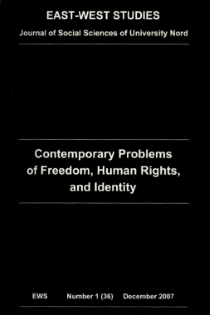IOTA HEN and the Normative T. On Interpretation of Religious Norms
##plugins.themes.bootstrap3.article.main##
Abstract
I would like to commence with a Lesson of History.
In the fourth century, there emerged maybe the most serious controversy about one letter in history. The Fathers of the Council of Nicaea (325) have used the word homoousios in order to express the relation of the Father's nature to the Son's. Based on its etymology, the compound Greek word means 'of the same essence', or as used more philosophically, 'of the same or similar substance' (Bridge 1910). I emphasise: same, OR similar. In the Catholic Encyclopaedia, it is explained that because 'the unity of the Divine nature wasn't questioned, the word carried the fuller meaning: "of one and the same substance'" (ibid). Thus, the conditions outside the ambiguous sign - in fact, people's faith and lack of doubt - directed the believers to pick the orthodox meaning. The meaning which, moreover, corresponded to the simpler, more concrete and unsophisticated meaning.
##plugins.themes.bootstrap3.article.details##

This work is licensed under a Creative Commons Attribution-NonCommercial-NoDerivatives 4.0 International License.




